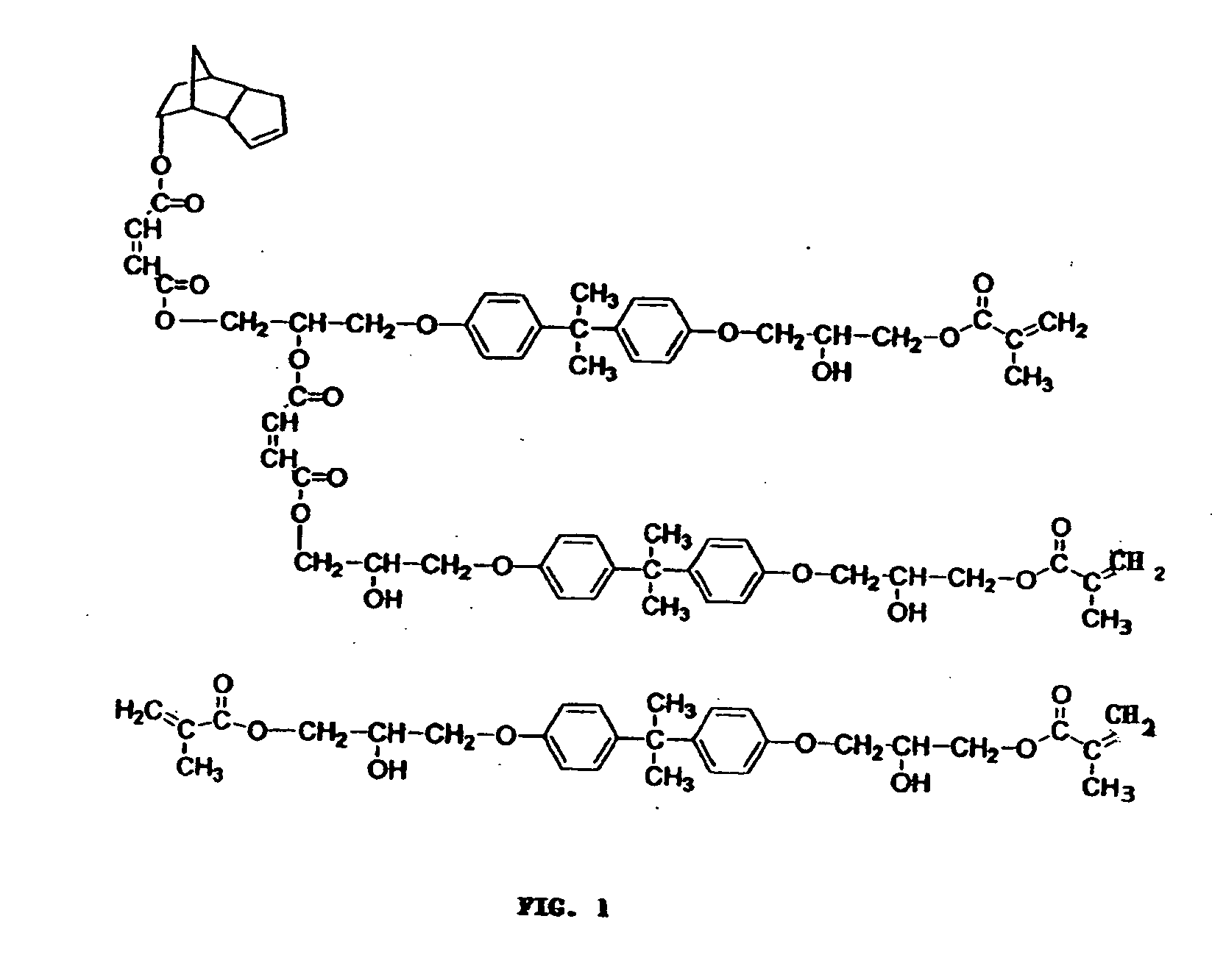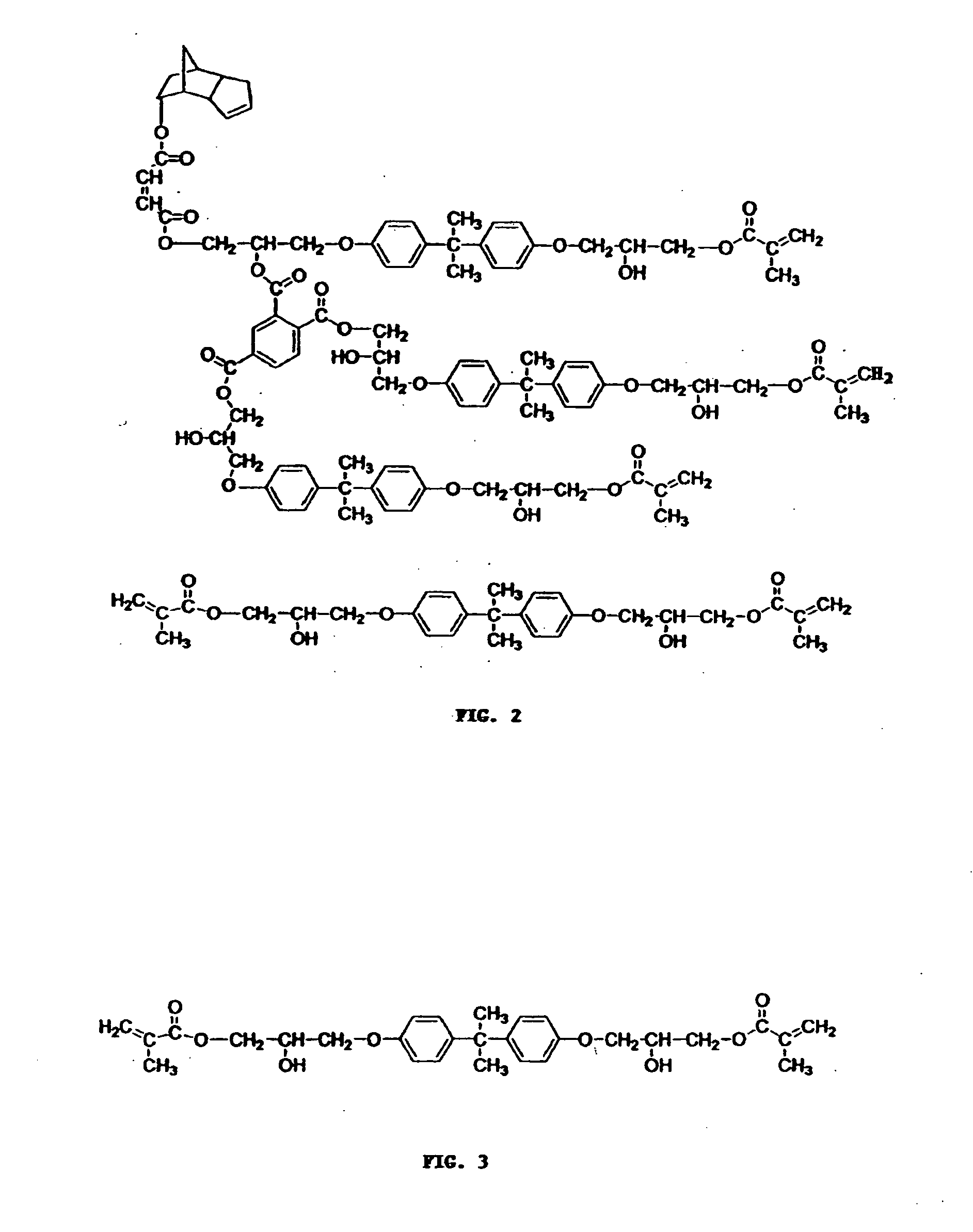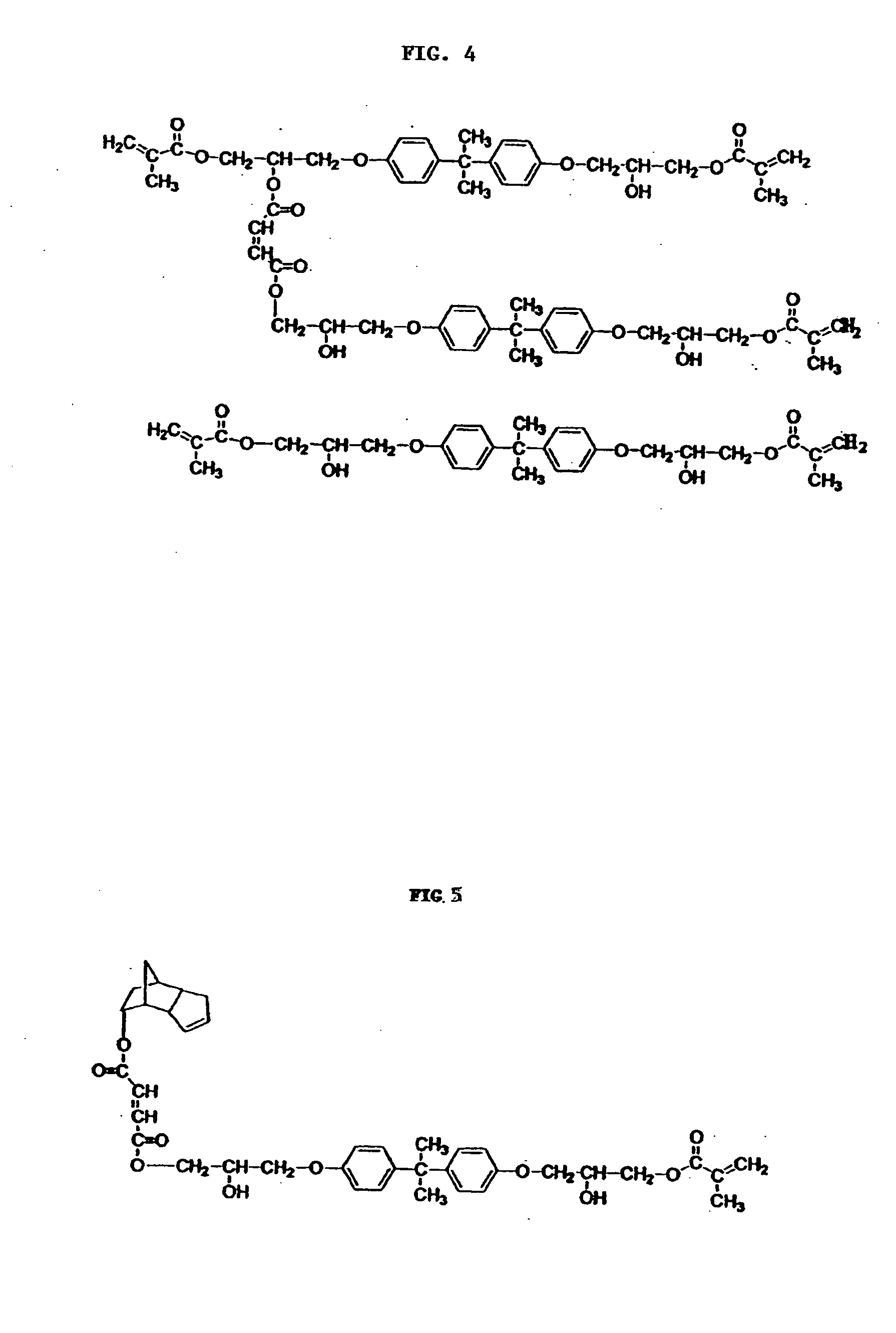Tack-free low VOC vinylester resin and uses thereof
a low-voc vinylester and resin technology, applied in the field of low-voc vinylester resin, can solve the problems of styrene vapor emission into the work atmosphere, hazard to workers and the environment, and the coating or gel coat made of lower-molecular weight resin tends to remain tacky for long periods of application, and achieve excellent water resistance and improved cure
- Summary
- Abstract
- Description
- Claims
- Application Information
AI Technical Summary
Benefits of technology
Problems solved by technology
Method used
Image
Examples
example 1
[0072] Into a two-liter flask equipped with stirrer, thermometer, air sparge tube and condenser were placed 124 grams of glacial methacrylic acid, 0.47 grams of toluhydroquinone, 70 grams of DCPD, 50 grams of maleic anhydride and 13 grams of water. The temperature was raised to 115° C. and kept at that temperature for 2 hours. Then 997 grams of Epoxy Resin A, 3.2 grams of benzyltriethylammonium chloride (TEBAC) were added and the temperature raised to 120° C. and kept at that temperature for 2 hours. After cooling to 90° C., 60 grams of maleic anhydride was added and the temperature held for 1 hour at 100° C. Then 244 grams of glacial methacrylic acid and 0.4 grams (200 ppm) of toluhydroquinone were added. The mixture was heated to 115° C. and held at that temperature until the acid number was below 20. Then 668 grams of styrene monomer and 0.2 grams of phenothiazine (100 ppm) were added. The resulting vinyl ester resin had a viscosity of 920 cp (70% wt in styrene).
[0073] This viny...
example 2
[0074] Into a two liter flask equipped with stirrer, thermometer, air sparge tube and condenser were placed 900 grams of Epoxy Resin A, 3.2 grams of benzyltriethylammonium chloride (TEBAC), 45 grams of maleic anhydride and 112 grams of dicyclopentadienyl monomaleate (prepared from DCPD, maleic anhydride and water) and the temperature was raised to 100° C. in 2 hours. Then 339 grams of glacial methacrylic acid and 0.47 grams (200 ppm) of toluhydroquinone were added. The mixture was heated to 115° C. and held at that temperature until the acid number was below 20. Then 597 grams of styrene monomer and 0.2 gram of phenothiazine (100 ppm) were added. The resulting vinyl ester resin had a viscosity of 600 cp (70% wt. in styrene).
[0075] The structure of this resin is similar to one in Example 1 shown in FIG. 1.
example 3
[0076] Into a two liter flask equipped with stirrer, thermometer, air sparge tube and condenser were placed 997 grams of Epoxy Resin A. 3.2 grams of benzyltriethylammonium chloride (TEBAC), 0.47 grams (200 ppm) of toluhydroquinone, 394 grams of glacial methacrylic acid, 60 grams of trimellitic anhydride and 50 grams of dicyclopentadienyl monomaleate (prepared from DCPD, maleic anhydride and water). The temperature was raised to 120° C. in 2 hours and held at that temperature until the acid number was below 20. Then 591 grams of styrene monomer and 0.2 gram of phenothiazine (100 ppm) were added. The resulting vinyl ester resin had a viscosity of 820 cp (70% wt. in styrene).
[0077] This vinyl ester resin is represented by the structure shown in FIG. 2.
Comparative Sample 1
[0078] Into a two liter flask equipped with stirrer, thermometer, air sparge tube and condenser were placed 997 grams of Epoxy Resin A, 3.2 grams of benzyltriethylammonium chloride (TEBAC) and 457 grams of glacial m...
PUM
| Property | Measurement | Unit |
|---|---|---|
| temperature | aaaaa | aaaaa |
| temperature | aaaaa | aaaaa |
| weight percent | aaaaa | aaaaa |
Abstract
Description
Claims
Application Information
 Login to View More
Login to View More - R&D
- Intellectual Property
- Life Sciences
- Materials
- Tech Scout
- Unparalleled Data Quality
- Higher Quality Content
- 60% Fewer Hallucinations
Browse by: Latest US Patents, China's latest patents, Technical Efficacy Thesaurus, Application Domain, Technology Topic, Popular Technical Reports.
© 2025 PatSnap. All rights reserved.Legal|Privacy policy|Modern Slavery Act Transparency Statement|Sitemap|About US| Contact US: help@patsnap.com



